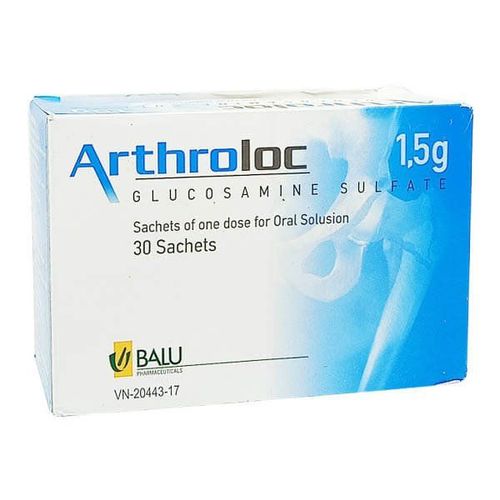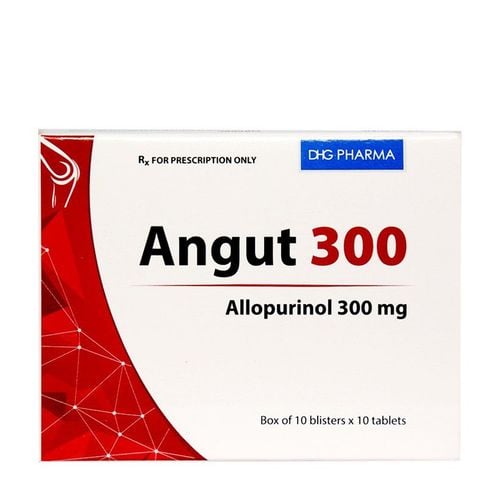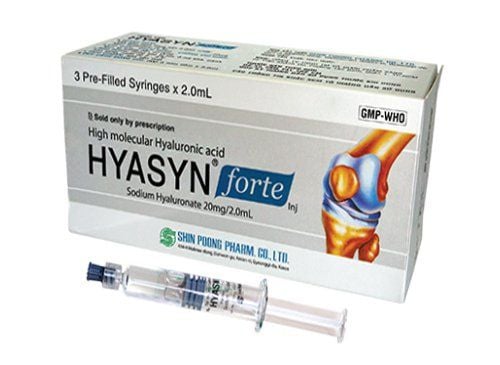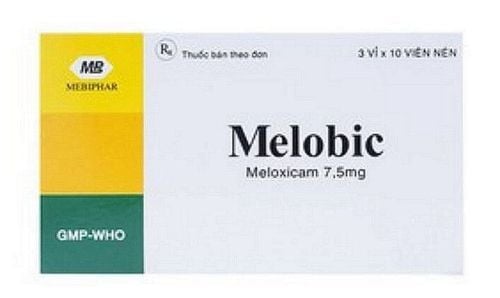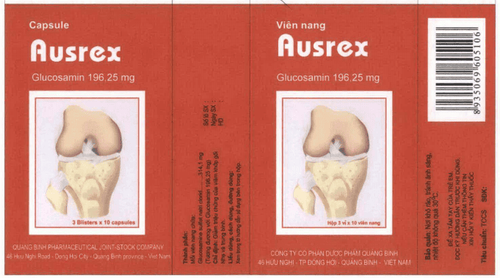This is an automatically translated article.
The human body can synthesize Glucosamine on its own, but this synthesis ability decreases with age, leading to bone and joint diseases such as dry joints, stiffness, arthritis. It is necessary to supplement with glucosamine to slow down the degeneration and deformity of joints and create mucus to help joints move easily.
1. Effects of Glucosamine
Glucosamine is an amino-monosaccharide synthesized from glucose found in most tissues of the body, especially more in connective and cartilage tissues. Glucosamine pharmaceutical form is an ingredient used to prepare products to support the treatment of chronic knee arthritis, helping to reduce symptoms of osteoarthritis. Glucosamine is a component of hyaluronic acid, chondroitin sulfate, and keratan sulfate, which form collagen fibers in joint tissues and cartilage. The process of synthesizing collagen fibers in cartilage tissues helps to slow down the process of degeneration, joint deformation and create mucus to help joints move easily.
The drug glucosamine is used to promote joint growth and stimulate cartilage production, thereby causing joints to heal while glucosamine also protects cartilage and prevents cartilage from breaking down.
2. The role of Glucosamine in the treatment of osteoarthritis pain
A joint is a joint between two ends of a bone composed of articular cartilage, subchondral bone, synovial fluid, and ligaments. Over time or due to injury, the cartilage in joints is prone to breakage, becoming thin and rough. When moving, the two ends of the bones can easily rub against each other, causing pain, swelling, and difficulty moving, causing degenerative joint diseases, arthritis, and osteoarthritis pain. To overcome this problem, in addition to finding effective treatments, patients also need to add an important nutrient to increase the ability to restore joint cartilage, which is Glucosamine.
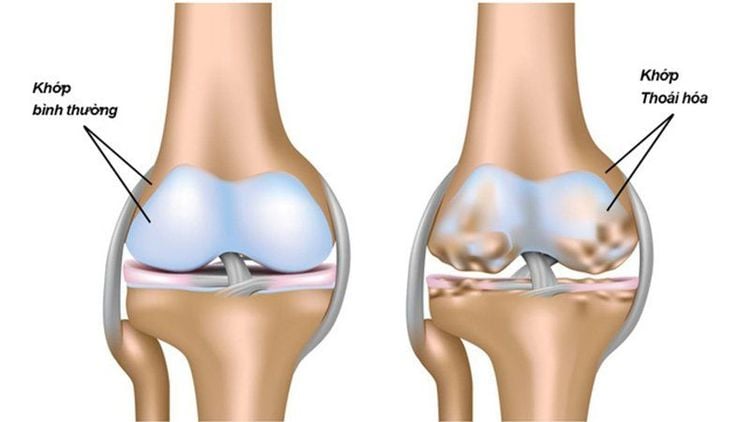
Lớp sụn khớp bị thoái hóa trở nên xù xì và bị bào mòn
There are different types of Glucosamine such as Glucosamine Sulfate, Glucosamine Hydrochloride and N-Acetyl-Glucosamine. Most of the research has been done with Glucosamine Sulfate which in the Sulfate component of Glucosamine Sulfate plays a very important role in the regeneration and repair of periarticular cartilage along with it also protecting cartilage and preventing cartilage breakdown. destroyed by enzymes. In addition, Glucosamine also has the ability to stimulate the production of connective tissue of the bones to help reduce the symptoms of calcium loss in the bones, increase the production of mucus of the joint fluid and increase the lubrication ability in the joints.
Therefore, products containing Glucosamine are widely used for patients with chronic arthritis, especially knee arthritis. Glucosamine can also reduce pain symptoms that contribute to slowing the progression of osteoarthritis and osteoporosis.
For people with knee arthritis, osteoarthritis should take Glucosamine every day to improve symptoms and support more effective disease treatment. Research has proven that regular supplementation with Glucosamine helps strengthen the structure of joints, helps joints relax, and maintains flexibility. The effect of Glucosamine is cumulative, the longer the use, the more noticeable the results. Patients need to see a doctor to be prescribed a specific dose, suitable for each person's condition and age.
3. Pay attention when taking Glucosamine
Patients need to pay special attention because Glucosamine is not a pain reliever, so it can't have an immediate effect, so when choosing to supplement with Glucosamine-containing drugs or supplements that have the effect of supporting the treatment. Treating the cause of degeneration, causing joint pain, should be used for a certain period of time to see good results. If the condition is severe, the patient may be prescribed additional anti-inflammatory drugs to support treatment.

Cần duy trì sử dụng Glucosamine trong thời gian nhất định để thấy hiệu quả
Using Glucosamine with incorrect dosage, not taking long enough will not bring any effect. At the same time, if the patient takes a continuous amount of Glucosamine without checking, periodically assessing the condition may also experience unnecessary side effects that make the disease worse. Therefore, it is advisable to consult a doctor or a musculoskeletal specialist.
Although no research has definitively confirmed that Glucosamine can be dangerous for people with allergies to shellfish, shellfish, snails, mussels and seafood, some recommendations have been made that should be cautious before use. To be on the safe side, patients should talk to their doctor about their allergies when Glucosamine is recommended.
People with chronic heart disease, high blood pressure or flu, ear, nose and throat infections need to be cautious when using Glucosamine. Glucosamine can also cause a temporary increase in blood pressure, causing increased heart rate, tachycardia.
In the case of patients with diabetes or hypoglycemia, when using Glucosamine, it is necessary to monitor and check blood sugar regularly. Glucosamine may increase the risk of bleeding in some patients, so patients with bleeding disorders, those taking blood thinners, or those taking daily aspirin if taking Glucosamine should have their blood clotting time checked regularly. to control the situation.
In addition, when using Glucosamine, patients may experience some unwanted side effects on the gastrointestinal tract, flatulence, soft stools, drowsiness, insomnia, headache, skin allergies, sensitivity to Sun exposure, nails become harder.
Glucosamine is not for use by people under 18 years old, especially pregnant or lactating women.
Customers can directly go to Vinmec Health system nationwide to visit or contact the hotline here for support.




